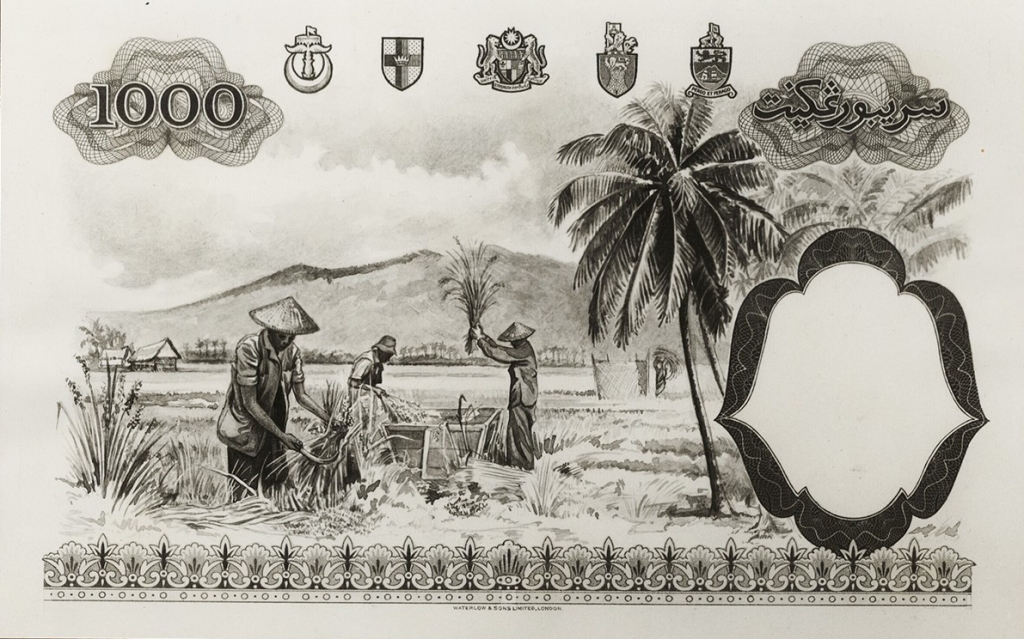
Recently I came across this photo of a Malaya and British Borneo $1000 banknote dated 1st March 1959. The design was never adopted but $1 and $10 denomination notes from the same series were issued and used in circulation in the Federation of Malaya, Singapore, Sarawak, North Borneo and Brunei.

The reverse of the note features a paddy field scene and displays the emblems, in left to right order, of Brunei, Sarawak, Malaya, Singapore and North Borneo.
Brumasi Dollar
This banknote got me to thinking how convenient it would be if the modern-day nations of Malaysia, Singapore and Brunei could share a common currency in the same way that the 19 European nations in the eurozone created the euro.
Brunei and Singapore have a Currency Interchangeability Agreement whereby banks, businesses and the public can accept payments in each other’s currencies at par and without charge. Malaysia used to be part of this arrangement until 1973 when it went its own way. Since then, the Ringgit has depreciated from parity to roughly three Ringgit to the Singapore Dollar.
Could there be a way for Malaysia to rejoin the Agreement? Probably not, because it would involve delegating too much responsibility for monetary policy to the Monetary Authority of Singapore which may be politically unacceptable for Malaysia.
An alternative could be to create an entirely new currency to replace the MYR, SGD and BND – let’s call this new currency the Brumasi Dollar for the sake of argument. The Authority for this currency could be headquartered in Singapore, a global financial centre with a track record of maintaining a strong, stable currency, but with the participation of board directors from the Malaysian and Bruneian Central Banks as well as the Monetary Authority of Singapore.
What would be the benefits of having a Brumasi Dollar? A common currency would facilitate tourism, trade and investment between Singapore, Malaysia and Brunei, with lower costs and price stability. Malaysians would enjoy the confidence of having a strong, stable currency which maintains its value against the US Dollar and other leading currencies.
Establishing a Brumasi Dollar would not be an easy task but, if there was political will on all sides to make it happen, it could definitely be achieved.
A common currency for all ten ASEAN member countries is not seen as likely in the foreseeable future since their economies are in different stages of development and their political systems are widely divergent.
Borderless Zone
Since we are talking about copying the eurozone why not also consider copying their Schengen Agreement and introduce free movement between Malaysia, Singapore and Brunei without internal border checks?

Millions of man-hours wasted queuing up at both ends of the Singapore/Malaysia causeway could be saved. Singaporeans would find it feasible to live in Johor where property prices are cheaper and Malaysians would find it easier to commute to work in Singapore. Removal of Brunei/Malaysia border posts would improve journey times between Sabah and Sarawak.
No doubt there would be a lot of objections to this idea on grounds of national security, sovereignty and so on but if the 26 countries in the Schengen Area can make it work it should surely be possible for Malaysia, Singapore and Brunei to work together and come up with practical solutions.
Just an idea!
